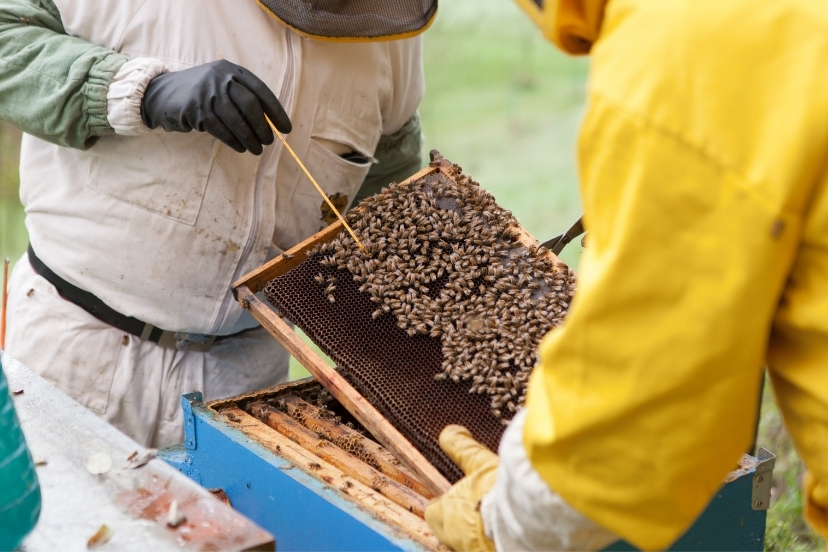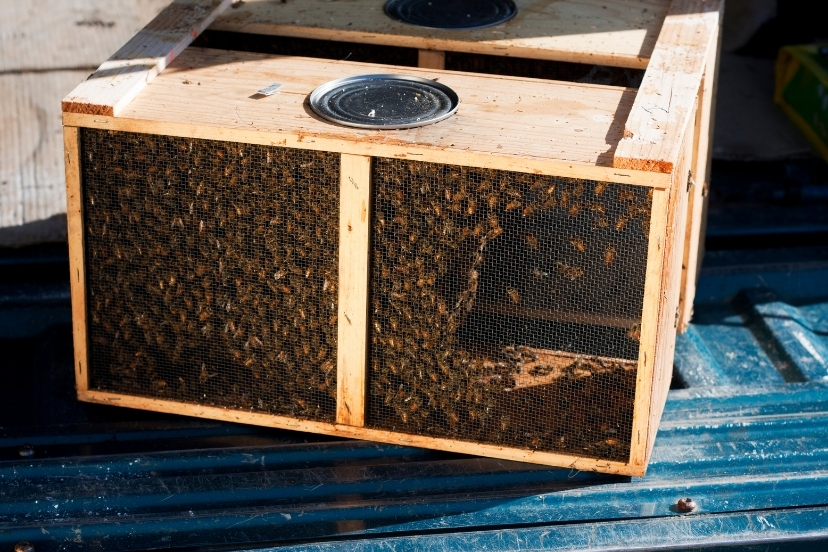The worker bee does all of the work of a honey bee colony other than laying eggs. The girls are in charge, All of the workers in a colony are female, and collectively – in ways not yet completely understood.
They also make all of the decisions that determine the fate of the colony. When it’s time to swarm, the workers somehow decide, and begin the preparations. When it’s time to replace the queen, the workers decide, and do what must be done.
Worker Bees Do ALL the Work…
Each worker bee is born capable of performing every task that must be done to help the colony survive and thrive.
But though not every worker will perform every task during her life, most will progress through many different jobs. The job that a bee does is determined largely by her age. Each job within the hive has bees of roughly the same age group performing that job.
Jobs Changes With Age
So a bee will change jobs as she ages, leaving a job as she becomes older than the age range performing that particular job.
The following list contains descriptions of the various jobs worker bees perform. The list is arranged in the order that bees would progress from job to job according to their age. The youngest bees would do the first job in the list, and the oldest bees would do the last.
Cell Cleaning
When an egg is laid in a cell, the egg grows into a larva which eventually pupates and spins a cocoon, within which it will grow into an adult.
When the adult bee emerges from the cell, it leaves behind the remains of the cocoon along with bodily wastes. These must be cleaned out before the queen will deposit another egg in the cell.
Capping Brood
The cell containing a larva is sealed with a wax capping at about the time the larva pupates.
Tending Brood
Once an egg hatches into a larva, it is a voracious eater. During the 8 days before the cell containing a larva is capped, it will be fed more than 10,000 times!
Attending the Queen
The queen does not feed herself or groom herself. Attendant bees feed and groom the queen, and even remove her bodily waste from the hive.
Cleaning Debris
Honey bees are neat freaks. They keep their hive clean. Bits of debris such as dead brood, dead bees and any other items that do not belong in the hive environment are removed from the hive. Any debris that the bees are physically unable to remove is coated in propolis.
On occasion, a mouse will enter a hive seeking food or warmth. If the mouse dies in the hive, or is stung to death, the bees are unable to remove it. When this happens, the bees completely coat the mouse with propolis, creating a mouse mummy that will not decompose in the hive.
Packing Pollen
When a foraging bee returns to the hive with a load of pollen, she deposits the pollen in a cell. Another bee will later pack the pollen into the cell, using her head to ram the pollen in tightly.
When nearly full, the pollen cell will be topped off with a shallow layer of honey, and then capped. Stored in this manner, the pollen will be preserved for many months.
Comb Building
Thousands of bees work together to build the comb used for raising brood and storing pollen and honey.
Ventilating Bees use their wings to circulate fresh air throughout the hive.
Guarding
Every society needs security, and the bee hive is no exception. Each hive has worker bees that act as guards.
The guard bees provide the first line of defense against intruders. They take posts at each entrance to the hive, and challenge anything attempting to enter the hive which is not a member of the hive.
Bees will rob the honey from a weaker hive if they can, and it is the job of the guard bees to prevent this from happening to their hive.
They are able to tell if a worker bee attempting to enter is from another hive, and will fight to the death if necessary to prevent that bee from entering the hive.
Foraging
If necessary, bees will fly more than 8 miles from the hive to find sources of nectar and pollen.
It’s All About the Survival of the Colony
During the busiest time of the year, when plants are freely yielding nectar and pollen, and the hive is frantically storing food against the coming winter, the workers live for only about 5 weeks. They quite literally work themselves to death, sacrificing themselves to ensure the survival of the colony.
Quite often, the last contribution an old worker bee makes to the well-being of the colony is to remove herself from the hive before she dies.
Flying away in the short, ground-scraping hops that her frayed wings will permit, or even crawling if she’s no longer able to fly, she will die alone, away from the colony for which she’s exhausted her life.
With this final act of selflessness, she will have saved her colony from having to expend the energy of removing her body from the hive.


